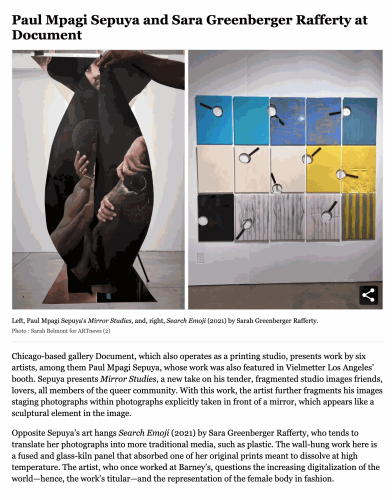The 9 Best Booths at Expo Chicago: From Dazzling Peacocks to New ‘Vogue’ Covers Honoring Black and Indigenous Women Activists
After almost two and half years without staging an iteration of its annual art fair, Expo Chicago has returned to the city’s Navy Pier in its new early April dates. The fair is the successor Art Chicago, which Tony Karman relaunched in 2012 as Expo. The new spring dates is around when Art Chicago used to take place—time and space have come full circle. The exhibition opened to VIPs on Thursday at noon with more than 140 exhibitors.
“The exposition is deeply rooted in the cultural ecosystem of Chicago, and we benefit greatly from its generous and collaborative spirit,” Karman said in a statement at the end of the first day. “The city has galvanized for a vibrant, robust week that has catalyzed lasting and meaningful connections that provide uplift to the artists, galleries, and institutions of Chicago, the greater Midwest, and beyond.”
Below is a look at some of the best booths at the Chicago fair, which runs through Sunday, April 10.
Paul Mpagi Sepuya and Sara Greenberger Rafferty at Document

Chicago-based gallery Document, which also operates as a printing studio, presents work by six artists, among them Paul Mpagi Sepuya, whose work was also featured in Vielmetter Los Angeles’ booth. Sepuya presents Mirror Studies, a new take on his tender, fragmented studio images friends, lovers, all members of the queer community. With this work, the artist further fragments his images staging photographs within photographs explicitly taken in front of a mirror, which appears like a sculptural element in the image.
Opposite Sepuya’s art hangs Search Emoji (2021) by Sara Greenberger Rafferty, who tends to translate her photographs into more traditional media, such as plastic. The wall-hung work here is a fused and glass-kiln panel that absorbed one of her original prints meant to dissolve at high temperature. The artist, who once worked at Barney’s, questions the increasing digitalization of the world—hence, the work’s titular—and the representation of the female body in fashion.
